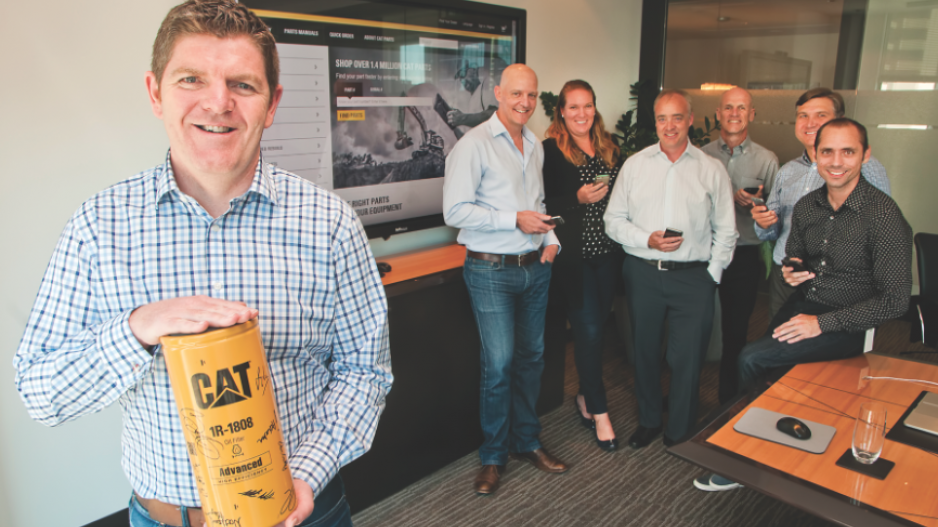In the pre-Internet days, more than a few children grew up preoccupied with questions like how many licks it would take to reach the centre of a Tootsie Pop.
All grown up, those individuals have seemingly migrated to Finning International (TSX:FTT) to figure out how many scoops of gravel a bucket loader can handle before it becomes strained.
Eight months ago, the Vancouver-based company launched Finning Digital as an internal tech startup tackling everything from advancements in e-commerce to the Internet of Things (IoT).
“Digital is changing every industry,” said Rich Seres, Finning Digital’s global marketing and strategy leader.
“And heavy equipment is no stranger to that.”
Finning is one of the world’s largest distributors of Caterpillar (NYSE:CAT) heavy equipment, reporting 2015 revenue of $6.19 billion.
Like much of the Canadian economy, Finning has been grappling with declining sales amidst falling oil and gas prices and lower demand from the mining sector.
It has announced about 2,500 layoffs worldwide since 2015 and its 2015 revenue was down 11% compared with 2014.
“The customer is looking at cost and efficiency way more intently than they were in a boom economy,” said Gary Agnew, vice-president of Finning Digital.
“Finning Digital is working in a much more agile methodology than the rest of Finning.”
Finning’s initiatives include IoT or machine-to-machine technology, which allows intelligent computer systems to transmit data and respond accordingly in real time without any human interaction.
“We’re trying to keep up and catch up,” Seres said. “Think about the potential for a piece of equipment when it’s connected to the Internet, to send messages back in terms of failure of parts or components or strain of components. So we can predict from an analytic point of view when something is going to fail.”
The team started with two employees at the beginning of the year and has since grown to about two-dozen in the Vancouver office.
The Finning Digital team has been hunkered down in a Gastown office adjacent to web development and e-marketing company Invoke Media since its launch.
Away from a corporate tower and in one of the city’s tech startup hubs, the team has been partnering with Invoke on improvements to Finning’s social media strategy and its e-commerce platform.
“They’re growing rapidly and in the process of revolutionizing their business processes and customer relationships,” said Jordan Eshpeter, Invoke’s head of engagement.
He added that while IoT and e-commerce are two major areas of focus, “the undergirding opportunity is data.”
“The convergence of customer and equipment data has the opportunity to provide real value. Improving efficiency, lowering operating costs and creating more service-oriented relationships for their customers.”
Stuart Olson Construction Ltd., which also hails from an industry thought to be somewhat traditional, is employing a similar tech startup model in its efforts to innovate.
The Stuart Olson Centre for Building Performance launched six years ago in Richmond, where it gathers together industry stakeholders to test and verify new technologies that can reduce emissions in buildings and improve energy efficiency.
Clint Undseth, Stuart Olson’s vice-president of innovation, said part of the problem when it comes to construction industry innovation is that stakeholders are too often working in silos instead of collaborating with one another.
“[The centre] can’t be working as a standalone group in construction,” he said. “You’ve got to bring finance and design, construction and operations together. We’ve got to think at a much bigger level.”
@reporton



